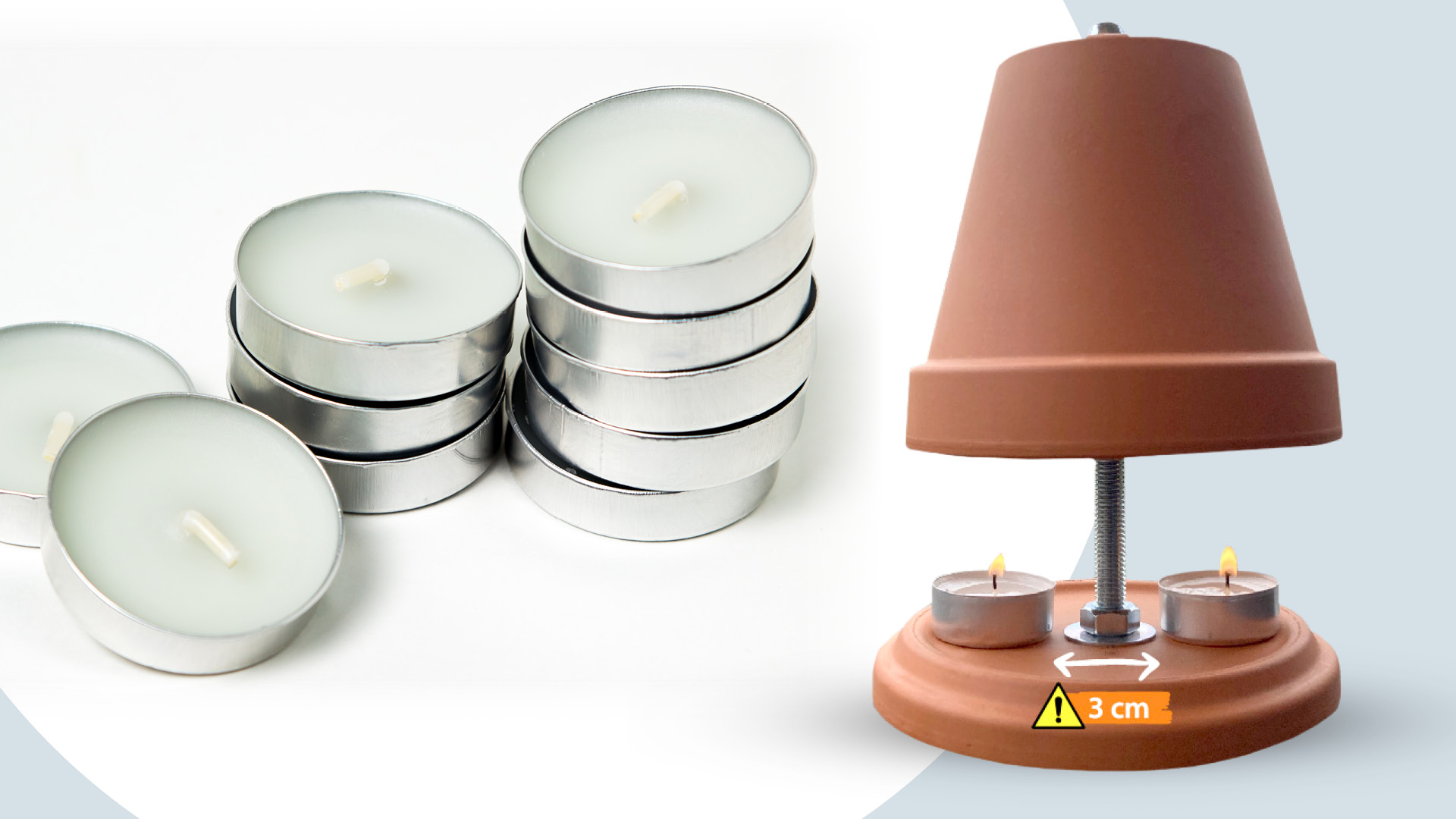
Important pour un fonctionnement sûr ! Respecter les distances.
Un poêle fait de bougies chauffe-plat ? Cela semble tout d’abord être une bonne idée au vu des prix élevés de l’énergie. La construction est très simple et peut être réalisée avec peu de moyens (bon marché), même par des non-initiés. Un poêle à bougies chauffe-plat se compose d’un pot en terre cuite plus grand et parfois d’un autre plus petit, qui sont vissés ensemble à l’aide d’une tige filetée et de quelques écrous et rondelles. Des bougies chauffe-plat sont ensuite placées sur un dessous de plat et chauffent les pots en argile. En ce moment, d’innombrables instructions pour la construction de poêles à bougies à chauffe-plat circulent sur Internet. Les moins doués en bricolage peuvent également acheter des kits prêts à l’emploi, qu’il suffit de visser.
La puissance calorifique d’une seule bougie chauffe-plat est toutefois très faible. Les bougies à réchaud ne conviennent donc pas pour chauffer des pièces. Cela ne change rien si l’on utilise les bougies à réchaud pour alimenter un poêle. La chaleur n’est déjà plus mesurable à un mètre de distance. Pour ressentir un effet réel, il faudrait de nombreux poêles. En règle générale, on compte une bougie chauffe-plat par mètre carré. Un poêle à bougies à chauffe-plat est donc avant tout une décoration agréable et pleine d’ambiance.
Les bougies chauffe-plat sont généralement fabriquées à partir de paraffine. Il s’agit d’un produit pétrolier. Comme l’huile ou l’essence en feu, elle ne peut pas être éteinte avec de l’eau. Au lieu de cela, les feux de paraffine doivent être étouffés en les couvrant lorsqu’ils ne peuvent plus être soufflés. On voit souvent sur les illustrations comment quatre ou cinq bougies chauffe-plat brûlent sous un poêle à bougie chauffe-plat. Et c’est alors que cette jolie idée de décoration devient une source de danger !
Le danger existe, en particulier lorsque plusieurs bougies chauffe-plat sont trop proches les unes des autres. Des gaz inflammables peuvent alors se former et, dans le pire des cas, s’enflammer brusquement. Pour éviter de tels feux de gaz, il faut veiller à respecter une distance de sécurité de trois centimètres entre les bougies à réchaud. On évite ainsi que les bougies se fassent fondre mutuellement et que des gaz s’accumulent qui ne se consument pas immédiatement. Il est donc déconseillé de placer plusieurs bougies sous un seul chauffe-plat si la distance de sécurité d’au moins trois centimètres ne peut pas être respectée.
Pour plus d’informations, cliquez ici : ECMA